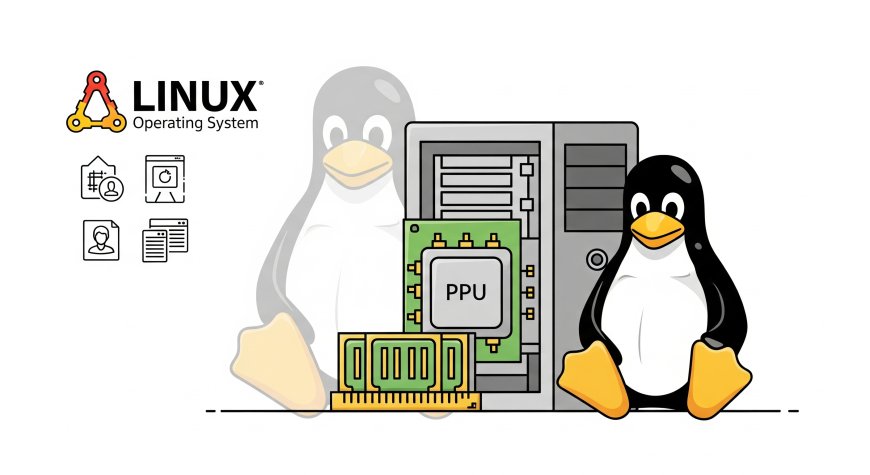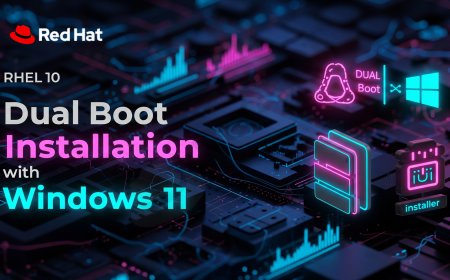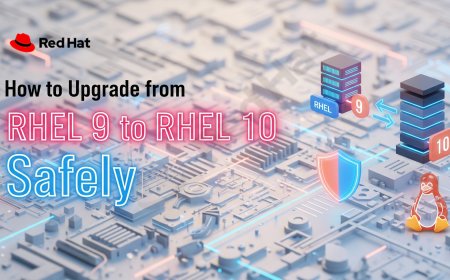Understanding Linux: Why Linux is the Backbone of Cybersecurity and Ethical Hacking in 2025
Linux is a powerful, open-source operating system widely used in cybersecurity due to its flexibility, transparency, and advanced command-line tools. From ethical hacking to server security, Linux enables cybersecurity professionals to analyze, secure, and control systems efficiently. This blog explores how Linux strengthens cyber defense, its advantages over other OSs, and its real-world applications in cybersecurity and digital forensics.

Introduction to Linux
The Linux Operating System is a cornerstone of modern computing, powering everything from personal devices to global cloud infrastructure. Its open-source nature, robust performance, and unparalleled flexibility make it a critical tool for developers, cybersecurity professionals, system administrators, and tech enthusiasts.
What is Linux?
Linux is an open-source, Unix-like operating system initially created by Linus Torvalds in 1991. Unlike proprietary systems like Windows or macOS, Linux is freely available, allowing users to access, modify, and distribute its source code. This openness has led to the creation of numerous distributions (distros), each tailored to specific needs.
Key Features of Linux
- Security: Linux’s permission-based architecture and transparent codebase minimize vulnerabilities.
- Open-Source: The source code is freely accessible, enabling community contributions.
- Performance: Lightweight and stable, Linux excels in high-demand environments.
- Customizability: Users can tailor the kernel, user interface, and software.
- Multitasking and Multiuser: Handles multiple users and tasks efficiently.
Popular Linux Distributions
- Ubuntu: User-friendly, perfect for beginners.
- Debian: Stable and reliable, widely used in servers.
- Fedora: Cutting-edge features for developers.
- Kali Linux: Designed for cybersecurity and penetration testing.
- Arch Linux: Highly customizable and lightweight.
Applications of Linux
Linux powers a wide range of systems:
- Web servers and hosting platforms (e.g., Apache, Nginx)
- Android smartphones (built on the Linux kernel)
- Cloud infrastructure (e.g., AWS, Google Cloud, Azure)
- AI and machine learning platforms
- Cybersecurity and ethical hacking environments
- IoT and embedded systems
- Software development and DevOps workflows
Basic Linux Commands
| Command | Description |
|---|---|
ls |
Lists directory contents |
cd |
Changes the current directory |
pwd |
Displays the current working directory |
mkdir |
Creates a new directory |
rm |
Deletes a file |
cp |
Copies files or directories |
mv |
Moves or renames files or directories |
sudo |
Executes a command with superuser privileges |
man |
Displays the manual for a command |
Step-by-Step: Setting Up Kali Linux
Part 1: Download Required Tools
- Download VirtualBox:
- Visit: VirtualBox Downloads
- Select your host OS (Windows, macOS, or Linux).
- Install VirtualBox.
- Download Kali Linux ISO:
- Visit: Kali Linux Downloads
- Under “Virtual Machines,” select “VirtualBox (64-bit).”
- Download the .7z file.
- Download 7-Zip:
- Visit: 7-Zip Downloads
- Install 7-Zip.
- Extract the Kali .7z file using 7-Zip.
Part 2: Import Kali into VirtualBox
- Open VirtualBox.
- Click File > Import Appliance.
- Select the .ova file from the extracted Kali folder.
- Click Next, then Import.
- Wait for the import to complete.
Part 3: Start Kali Linux
- Select the new VM (e.g., “Kali-Linux-2025.x.x”).
- Click Start.
- Log in using default credentials (typically
kali/kali).
Part 4: Update and Configure Kali for Cybersecurity
- Update Kali:
sudo apt update && sudo apt upgrade -y
- Install Cybersecurity Tools:
sudo apt install nmap wireshark burpsuite john hydra aircrack-ng -y
- Optional: Set Up Python:
sudo apt install python3 python3-pip -y pip3 install scapy requests beautifulsoup4
Why Learn Linux?
Linux is a gateway to understanding modern computing. Reasons to learn include:
- Industry Relevance: Powers servers, cloud platforms, and supercomputers.
- Developer Productivity: Offers tools for coding and automation.
- Cybersecurity: Industry-standard for ethical hacking and penetration testing.
- System Administration: Essential for managing networks and infrastructure.
- Career Opportunities: Valued in DevOps, AI, and high-performance computing.
Conclusion
Linux is a powerful, open-source operating system driving much of the modern technological landscape. Its flexibility, security, and community-driven development make it an essential skill for anyone in tech. Start your Linux journey today to unlock opportunities in IT and beyond.
Frequently Asked Questions (FAQ)
Is Linux free to use?
Yes, Linux is free and open-source, with no licensing fees.
Can I run Linux on my Windows or macOS computer?
Yes, you can use a virtual machine, dual-boot, or a live USB.
Which Linux distribution is best for beginners?
Ubuntu is recommended for its user-friendly interface and community support.
Is Linux secure?
Linux is highly secure due to its permission-based system and transparent codebase, though no system is immune to vulnerabilities.
Can I use Linux for gaming?
Yes, tools like Steam Proton and Wine support a growing number of games, though compatibility varies.
How do I learn Linux?
Start with Ubuntu, practice basic commands, explore tutorials, and experiment in a virtual machine.
What's Your Reaction?
 Like
0
Like
0
 Dislike
0
Dislike
0
 Love
0
Love
0
 Funny
0
Funny
0
 Angry
0
Angry
0
 Sad
0
Sad
0
 Wow
0
Wow
0













